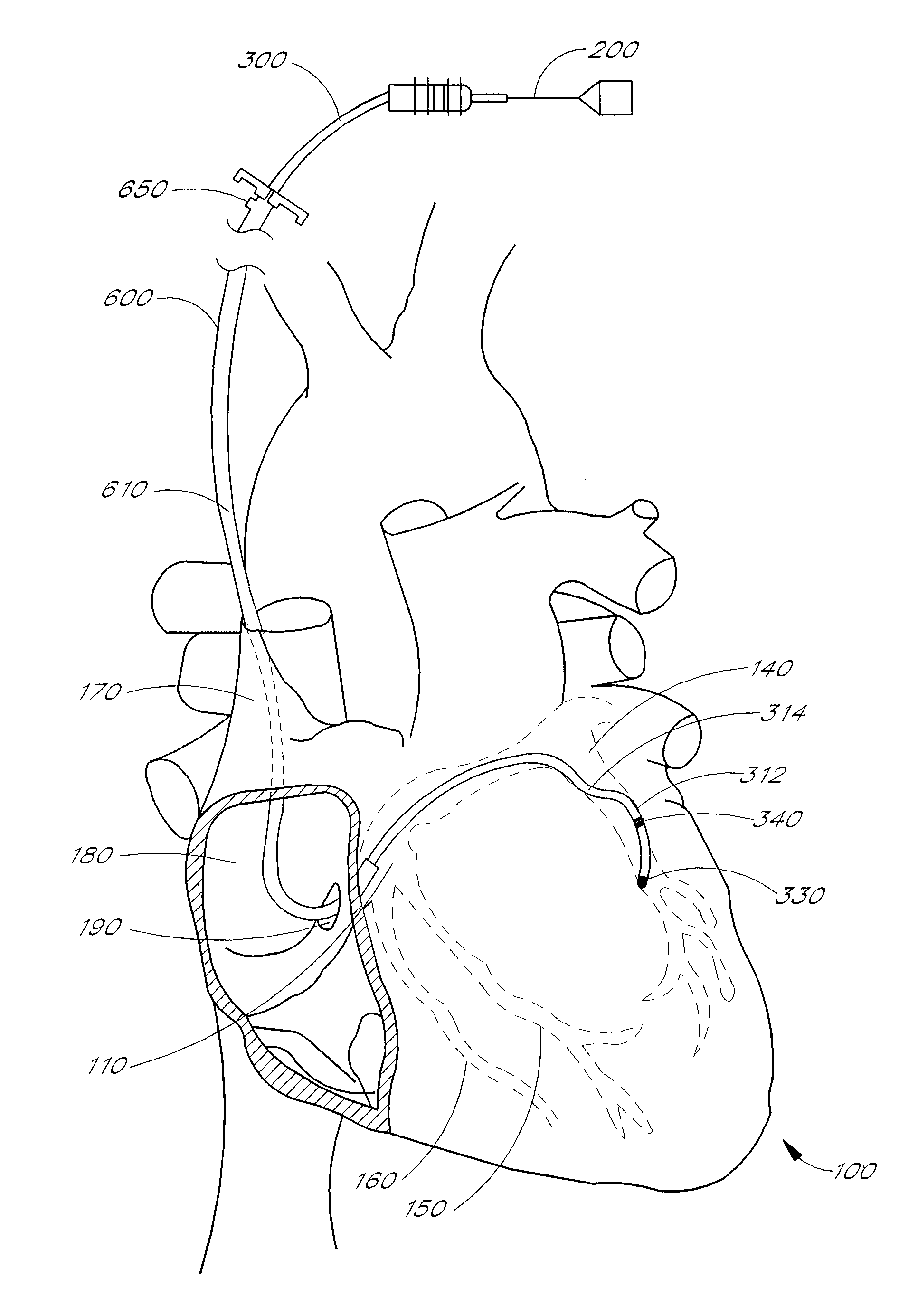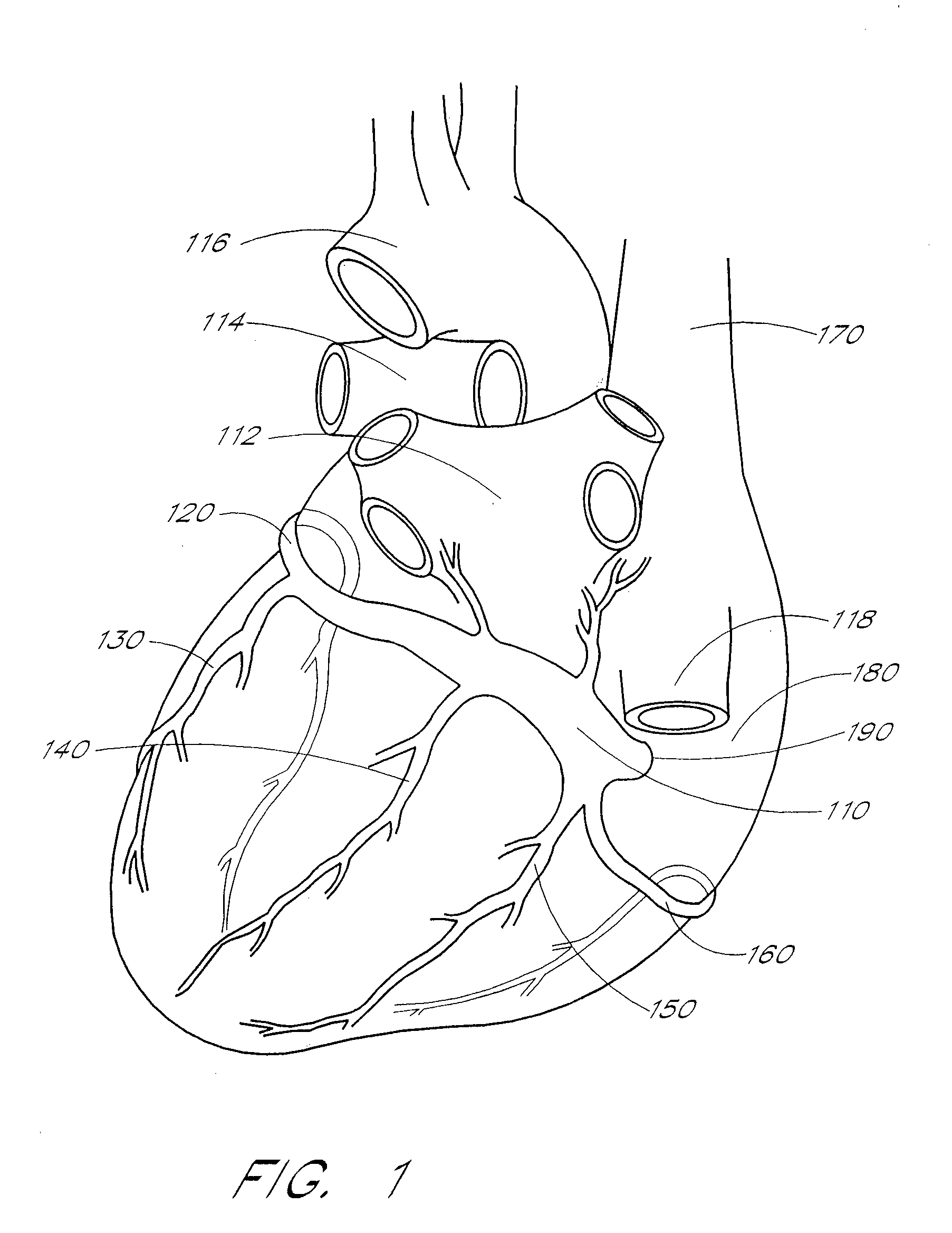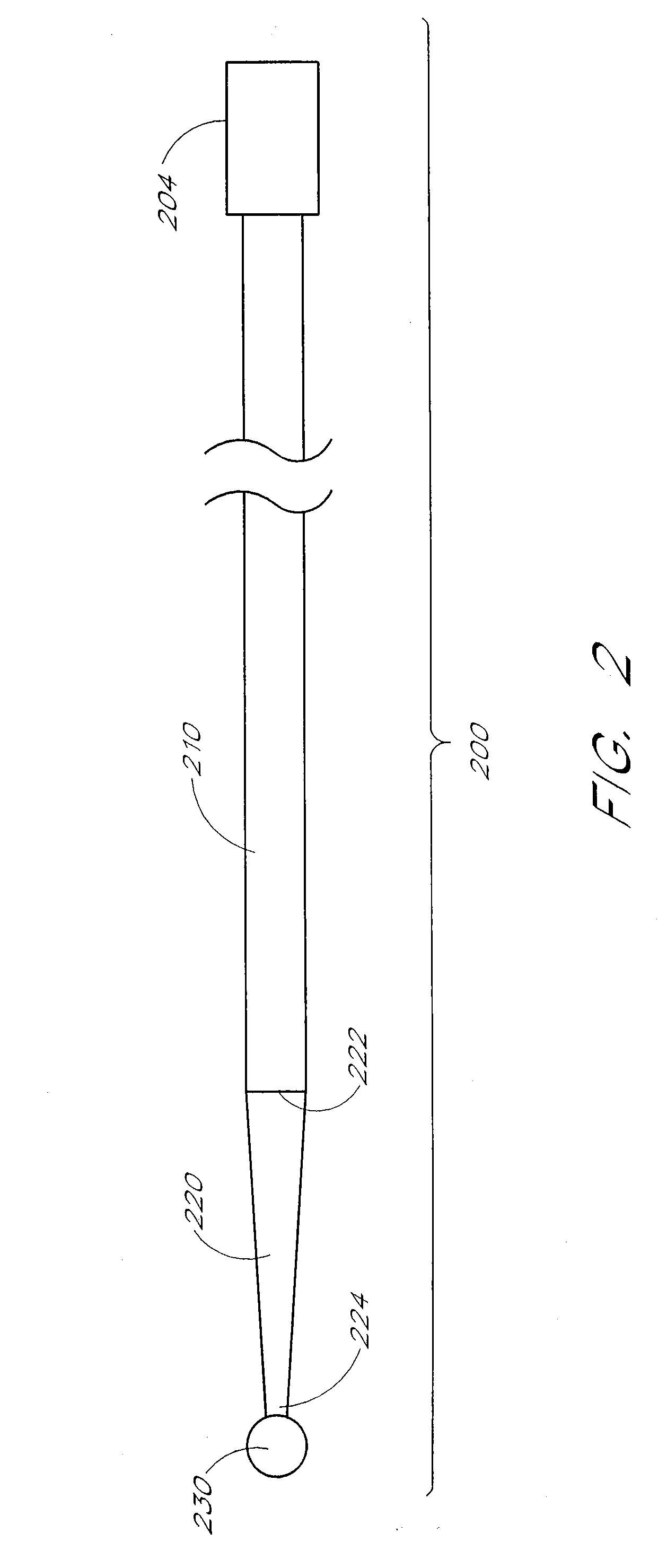Self-anchoring coronary sinus lead
a coronary sinus lead and self-anchoring technology, which is applied in the direction of internal electrodes, transvascular endocardial electrodes, therapy, etc., can solve the problems of affecting the patient's life, affecting the patient's comfort, so as to achieve the effect of easily traversing the bend
- Summary
- Abstract
- Description
- Claims
- Application Information
AI Technical Summary
Benefits of technology
Problems solved by technology
Method used
Image
Examples
Embodiment Construction
[0034] The following description is not to be taken in a limiting sense, but is made merely for the purpose of describing the general principles of the invention. The scope of the invention should be determined with reference to the claims.
[0035] As indicated above, the invention provides an implantable lead system for placement in difficult-to-reach regions of the heart. To better understand the details of the invention, an overview of the relevant anatomy of the coronary sinus region of the heart is first provided. FIG. 1 is a perspective view of the left-posterior region of the heart 100. As shown in FIG. 1, the coronary sinus vein 110 is the main vein of the heart. Typically, the coronary sinus vein 110 is a venous channel of about 2 centimeters in length which runs from right to left in the posterior part of the coronary groove. The coronary sinus vein 110 connects to the great cardiac vein 120 at its left end. Moreover, the coronary sinus vein 110 connects to the left margina...
PUM
 Login to View More
Login to View More Abstract
Description
Claims
Application Information
 Login to View More
Login to View More - R&D
- Intellectual Property
- Life Sciences
- Materials
- Tech Scout
- Unparalleled Data Quality
- Higher Quality Content
- 60% Fewer Hallucinations
Browse by: Latest US Patents, China's latest patents, Technical Efficacy Thesaurus, Application Domain, Technology Topic, Popular Technical Reports.
© 2025 PatSnap. All rights reserved.Legal|Privacy policy|Modern Slavery Act Transparency Statement|Sitemap|About US| Contact US: help@patsnap.com



